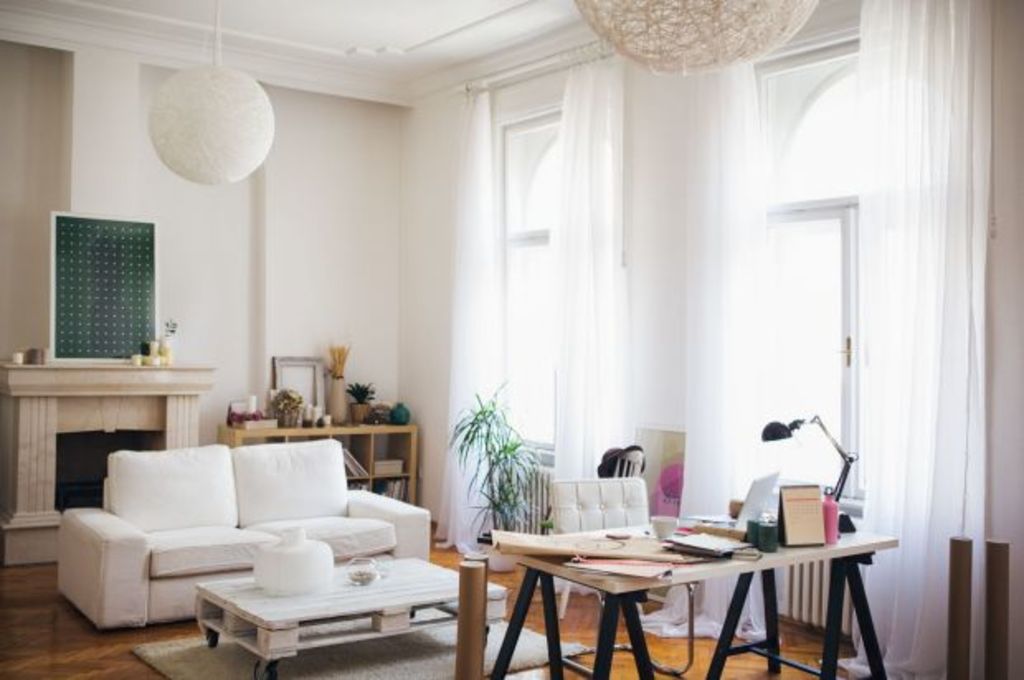Minimalism causes stress and domestic arguments, report finds

Fuelled by books like Marie Kondo’s The Life-Changing Magic of Tidying Up, decluttering and minimalism have been held up as the path to household harmony. But, if the latest IKEA catalogue is anything to go by, we should embrace our stuff and stop stressing with the effort to attain perfect, minimalist interiors.
“More is more,” is the catchphrase of the 2018-2019 catalogue.
Espousing the theme of “more”, hall stands, bookcases, cabinets and tables are overflowing with books, clothes and crockery, and crowded with ornaments and other household treasures. Messy paperwork, half-open books, and a daggy work bag are some of the unashamed props in a study, that looks – dare we say it – lived-in (gasp), while kitchens and bedrooms burst at the seams with stuff and clutter, words so many of us have come to relate with failure and guilt.
Although obviously staged, there’s something deeply assuaging about this defiance against minimalism.
So what’s behind the backlash? And should we get on board?
Digging deep into the psyche of homeowners, the Swedish furniture retailers’ latest Our Life at Home Report found that our household possessions are a double-edged sword. “Having too much stuff is the single biggest cause of stress at home,” says the report. “But, paring down too much might actually cause more anxiety than relief. Many of us feel under pressure to live with fewer things, but our belongings represent our memories, hopes and dreams.”
The report, which surveyed over 21,000 people across 22 countries including Australia, revealed that 27 per cent of people felt under pressure from society to live more minimally.
- Related: Decluttering tips that actually work
- Related: Can a blanket really improve your health?
- Related: Protect your home from this winter problem
It’s a phenomenon also driving arguments and disharmony in the home. Globally, a whopping 49 per cent of those surveyed said different ideas about mess were the main cause of spats at home. People in the Philippines, Indonesia and Malaysia were the most likely to battle over the matter, those in Norway and Japan least likely. And 19 per cent had even gone as far to secretly throw out something that belonged to someone they lived with.
Common tensions for homeowners are how to balance the pressure to declutter with the importance of meaningful objects, and the need for personal space with the ability to ask for it, according to the authors of the 2017 report.
So is there a way we can achieve greater harmony in our approach to our stuff?
Interior and building designer and Zen expert Anthony Ashworth reveals that the way minimalism is applied in modern design is actually a corruption of the original principles of Zen. “The so-called application of minimalism to our homes should be called steril-ism!” he says. “It’s all so very masculine when our homes need to be feminine, holding us gently, not separating us from self and life and reflecting the hard slickness of modern life.”
It’s all about striking a balance between meaningful decoration and succumbing to mindless consumerism, with meaningless clutter and stuff everywhere, Ashworth says.
While an over-feathered nest can cause stress, we also shouldn’t torture ourselves trying to attain to the ideal of a perfect home. “For some of us, merely feeling a need to apply minimalism can feel stressful or even counter-intuitive,” he says. “Our homes and our stuff are key to our identity. Having to compromise our values around how we decorate and the quantity of commodities we have, may bring up feelings of being unsafe, lack and fear to the point of genuine anxiety. For some it can trigger deep-seated issues around scarcity.”
He suggests warring partners try to make it fun rather than a battleground, and allow each person creative input into the home, avoiding the common situation of one appointing themselves as the “creative one” with the other defecting. “This may create resentment that will inevitably come out in another area of the relationship in time,” he says.
Compromise and prioritising is key. Start the decluttering process in an agreed part of the home, such as the family or lounge room, he advises. Allow the other party to retain their clutter in another part of the house.
Start on something small, such as the worst drawer or cupboard in the home and work outward from that. “Ideally the clutter-dependent one will see that it feels great, and may embrace the process,” he says.
Ashworth generally advises his clients against overly minimalistic interiors. “It can create a soulless, hard and masculine feeling to a home. It’s ideal for interior design magazines, or staged houses. But not so good for a real, genuine home.”
We recommend
We thought you might like
States
Capital Cities
Capital Cities - Rentals
Popular Areas
Allhomes
More







